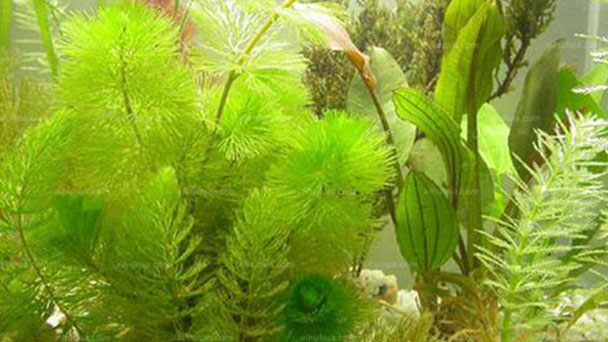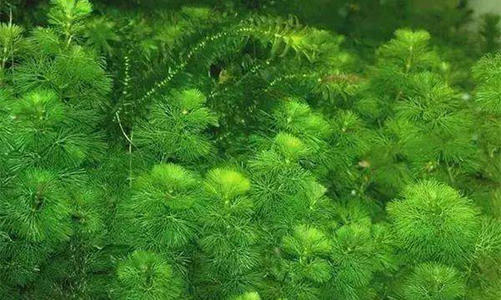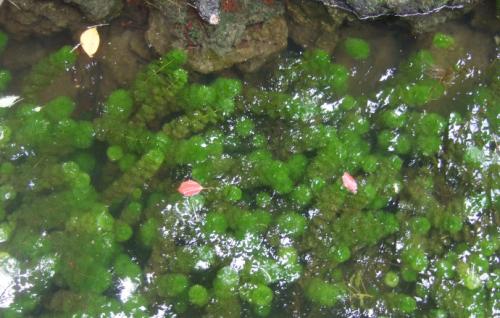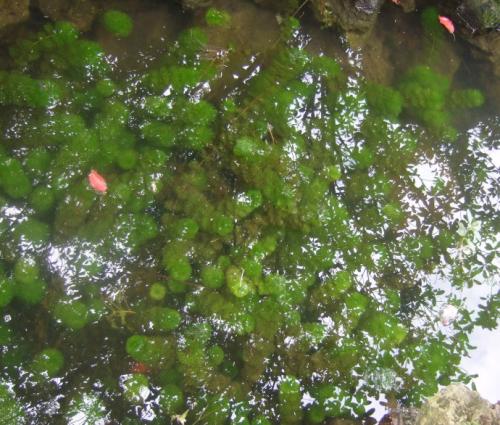Cabomba caroliniana (Carolina fanwort ) profile
Written by Maggie
Mar 25 2021

Cabomba caroliniana (Carolina fanwort ), belonging to the plant kingdom, is a species of the genus Cabomba in the family Cabomba caroliniana, native to South America; Cabomba caroliniana is introduced in aquariums around the world, naturalized in warm areas.
Cabomba caroliniana picture

Morphological characteristics of Cabomba caroliniana
Stems
Cabomba caroliniana is a perennial herb with stems up to 1.5 m long, branched and pubescent in young parts.
Leaf
The leaves of Cabomba caroliniana were opposite to each other. The petioles were 1 ~ 3 cm long and the leaves were 2.5 ~ 3.8 cm long. The lobes were palmately divided, with 3 ~ 4 times of lobes. Floating leaves are few, alternate at the top of flowering branches, leaf blade speltate, narrowly elliptic, 1 -- 1.6 cm long, 1.5 -- 2.5 mm wide, margin entire or base 2-lobed, petiole 1 -- 2.5 cm long.
Flowers
Flowers of Cabomba caroliniana are solitary, axils of submerged or floating leaves; Pedicels are 1 -- 1, 5cm long, pubescent; Sepals are pale green, glabrous, elliptic, 7 -- 8mm long, ca. 3mm wide; Petals are greenish white, subequal to sepals or slightly larger, base clawless, with a pair of yellow glands near base: pistil 6, free, filaments ca. 2mm, anthers 1.5 mm, glabrous; Carpels 3, free, pistil 3.5 mm, puberulent, ovary 1 locule, usually with 3 ovules.
Ecological habits of Cabomba caroliniana
Cabomba caroliniana is a perennial aquatic herb that grows in rivers, lakes, canals, and channels in a plain water network. In China, it usually blossoms but does not bear fruit, propagating and dispersing mainly on broken branches with submerged leaves.
Cabomba caroliniana likes light; Cabomba caroliniana likes warmth, afraid of cold.
Cabomba caroliniana propagation
Cabomba caroliniana has an amazing ability to reproduce, and each node can develop into a complete plant under the right conditions. Most of the cutting propagation, rapid growth. The water quality requirements are not strict, the demand for fertilizer is medium, the growth stage can be every 1 ~ 2 weeks of top dressing. They like light, but too much can breed moss. Cabomba caroliniana grows well in the temperature range of 12 ~ 25 ℃, and the overwintering temperature should not be lower than 4℃. As the plant grows, Cabomba caroliniana should be pruned to ensure better plant shape.
Cabomba caroliniana route of transmission
In China, it usually blossoms but does not bear fruit, propagating and dispersing mainly on broken branches with submerged leaves.
Cabomba caroliniana control method
In the United States and Australia, a variety of control methods have been tried, such as herbicides, lowering water levels (shelving fields), mechanical mowing, and feeding by herbivorous fish.

Disease control of Cabomba caroliniana
Cabomba caroliniana was probably introduced as an aquarium ornamental plant and escaped. In places such as the United States and Australia, its infestation causes increased leakage from reservoirs and ponds, blockages and flooding in irrigation canals; A large number of dead Cabomba caroliniana decompose and consume oxygen, which is harmful to fisheries; The dense Cabomba caroliniana impedes the recreational, agricultural, and aesthetic functions of the lake and reservoir; Cabomba caroliniana in Australia has a tendency to displace native aquatic plants, with consequent impacts on biodiversity. Therefore, the invasion and spread of Cabomba caroliniana can not be underestimated the potential threat to China's national economy and ecosystem.
Distribution of Cabomba caroliniana
Cabomba Caroliniana Origin: South America
Cabomba Caroliniana Invaded: Jiangsu, Shanghai, Zhejiang
Cabomba caroliniana was first discovered in Yinxian County, Zhejiang Province in 1993. It was collected in Taihu Township, Wuxian County, Jiangsu Province in 1998.
Garden use of Cabomba Caroliniana
Cabomba Caroliniana is suitable for greening large bodies of water and is also a good material for decorating glass containers. Cabomba caroliniana is often considered a harmful aquatic plant because of its ability to multiply rapidly in natural waters and even clog waterways.
The hazard of Cabomba caroliniana
Cabomba caroliniana lived whole in water and probably escaped after being introduced as an aquarium ornamental plant. Large growth of Cabomba caroliniana can block waterways and irrigation channels, lead to the rise of reservoirs and ponds and leakage, replace native aquatic plants, change the species composition of local fish and other aquatic animals, damage the landscape of lakes and reservoirs, and cause secondary pollution of water bodies.

Latest Updated
- Benefits of Bugleweed - 7 Science-backed Health Benefits
- Bugleweed Dangers & Side Effects - Is It Poisonous?
- How to Plant Evergreen Trees - What You Should Know
- When to Plant Evergreens - Grow Guide for Evergreen Trees
- 12 Wonderful Evergreen Shrubs for Your Garden
- 12 Popular Evergreen Plants with Pictures for Beginners
- When And How To Prune A Lilac Bush Like a Pro
- How to Grow & Care for Lilac Vine (Hardenbergia Violacea)
- Japanese Lilac Tree (Syringa Reticulata) Care & Propagation Guide
- Shumard Oak Pros and Cons - What to Know
Popular Articles
- Winter maintenance of Antirrhinum Majus
- How to Grow Terminalia Mantaly Tree
- How to Grow and Care for Crossostephium Chinense
- How to grow Antirrhinum Majus in spring
- Peristeria Elata (Dove Orchid) Profile: Info & Care Guide
- Underwatered Snake Plant (Sansevieria Trifasciata) - Signs And How To Fix
- How to Care for Brazilian Jasmine Plant (Mandevilla Sanderi)
- How to Grow & Care for Graptopetalum Purple Delight in Summer
- Rosa Chinensis (China Rose): Plant Growing & Care Tips
- How to Care for Baby Sun Rose (Aptenia Cordifolia)